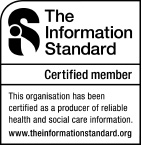Brain Tumour Surgery (Neurosurgery)
On this page you will find lots of information about different types of brain tumour surgery, to help you know what to expect.
Awake Craniotomy
An awake craniotomy is an operation performed in the same manner as a ‘conventional’ craniotomy but with the patient awake during the procedure.
Image Guided Craniotomy
This is the most generally used procedure, which involves removing a piece of skull and then replacing it, under a general anaesthetic.
Craniotomy in MRI
This technology has been around for about twenty years in the USA and was pioneered by Prof. Peter Black. It is now available in the UK.
Lasers in Brain Surgery
This is a new technique and sometimes using lasers can help to remove a brain tumour. It does require opening the skull and is used during a craniotomy. It is still experimental and is not available in the UK.
Preparing for neurosurgery – a timeline
Preparing for neurosurgery is scary, but neurosurgeons perform hundreds of these operations each year. This timeline can help you prepare.
I have a far better idea of what to ask my consultant when I next see him and what the long term implications will be. This has given me more sense of not only an understanding of my situation, but I feel like I have regained some control of the situation and my life again.
I really cannot thank-you enough for your help with this. I had no idea where to turn or what to do and although there is still very much a long way to go and many decisions to be made, which will no doubt be hard, I feel better prepared and feel that if I need help I am not alone, but that I can turn to you.
Thank-you, from the very bottom of my heart,
Nadia, brain tumour patient, London
Find brain tumour support on your doorstep, and current brain tumour trials at www.braintumourhub.org.uk
Brain surgery. Scary words. If you are reading this then it is highly likely you have recently learnt that you are going to have neurosurgery. This is one of the first major decisions you will face. In fact, I don’t think there is anything as frightening as facing this decision – ever. If you can make this decision – one way or the other – then nothing you do will ever be as scary as this.
But you are not facing this alone. You will have a brilliant team behind you, your family will be there and of course, you can call us any time to talk things through – 01983 292 405.
No decision is going to be straightforward. It’s all a balance of risk v. benefits and the truth is that there is seldom a good reason to remove a brain tumour unless it is thought that the vast majority can be removed. Partial resection can sometimes be a bad thing. What we’re saying here is that each case needs to be decided individually; so much depends on your quality of life, type of brain tumour, where it is. The list goes on.
First decision – whether to proceed with an attempted complete surgical removal or whether to have just a biopsy. Evidence shows that wherever possible it is better to resect as much as is possible. Surgery to remove a tumour, even malignant ones, has several advantages over a biopsy:
- By removing tumour mass, room can be made to allow for the swelling of brain tissue which occurs both with radiation therapy and if the tumour recurs.
- The more that can be taken out, the less that will need to be treated with other forms of therapy.
- More tumour to diagnose, means better accuracy of the diagnosis and grading, because there are more cells to examine.
Everything depends on the individual’s well being, the nature of the tumour, and potential complications. All of these must be talked through and thought about. And thought about some more. But don’t think for too long. It can be very wearying and will occupy your head so that in the end you will not feel able to make a decision. And no decision is irreversible – until you go down to the operating theatre.
Did this information make you feel more resourced, more confident or more in control?
 Date published: 17-05-2009
Date published: 17-05-2009
Last edited: 28-02-2018
Due for review: 28-02-2021



